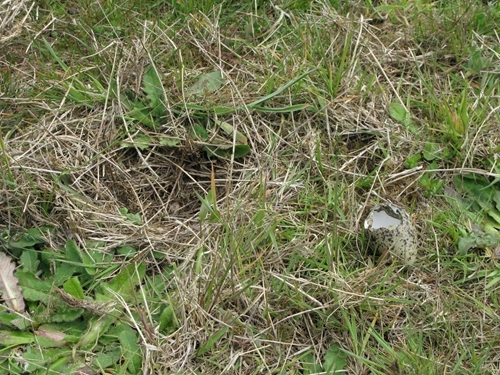Problem 1: Inappropriate water levels and sward conditions
 Currently, inappropriate water levels and an increasing polarisation of sward conditions towards intensively grazed short swards or rank areas with scrub encroachment are the most pertinent habitat issues. These are leading to a reduction in floristic interest of the meadows and a reduction in suitability as breeding habitat for waders.
Currently, inappropriate water levels and an increasing polarisation of sward conditions towards intensively grazed short swards or rank areas with scrub encroachment are the most pertinent habitat issues. These are leading to a reduction in floristic interest of the meadows and a reduction in suitability as breeding habitat for waders.
Limited water control structures throughout the Avon Valley make it difficult to regulate water levels of some key fields in spring. During the last 15 years, there has been a large reduction in the number of livestock within the valley, with a shift from dairy herds to beef cattle. On many units within the SSSI, the reason for unfavourable conservation status is undergrazing. Appropriate grazing management by farmers is essential to maintain the suitability of swards for breeding waders and wintering wildfowl. The ability to graze fields appropriately is closely allied to control over water levels so that livestock can gain access at certain times of year. These issues reduce the area of habitat suitable for nesting and ultimately reduce wader breeding success because birds are likely to be more vulnerable to predation and suffer lower availability of chick food in sub-optimal habitat.
Problem 2: High levels of nest predation
GWCT data for lapwings in the Avon Valley provide evidence for high levels of nest predation. Our data indicate that 61% of nesting attempts fail and that 82% of nest failure is caused by predation.

Evidence of corvid predation on nests (Photo: Andrew Hoodless)
Information on the timing of predation events from temperature loggers placed in nests indicates that 41% of nest predation is during daylight hours and hence can most likely be attributed to corvids or gulls, with 49% of predation at night, mainly by fox, and 10% during twilight at dawn and dusk. GWCT count data suggest almost double the number of corvids in the Avon Valley in April and May now compared to 1996. Changes in fox numbers are unknown. RSPB guidelines for management of breeding wader sites advise instigating measures to reduce predation rates if, after monitoring for five years, average nest survival is below 50%.
Problem 3: How to engage key individuals and organisations
Getting key individuals and organisations to engage with, own and deliver conservation actions is often an issue in conservation projects. This project will test the use of a new product for effective delivery of lasting conservation actions. Planning For Real will work on this issue as part of an innovative approach to stakeholder engagement.